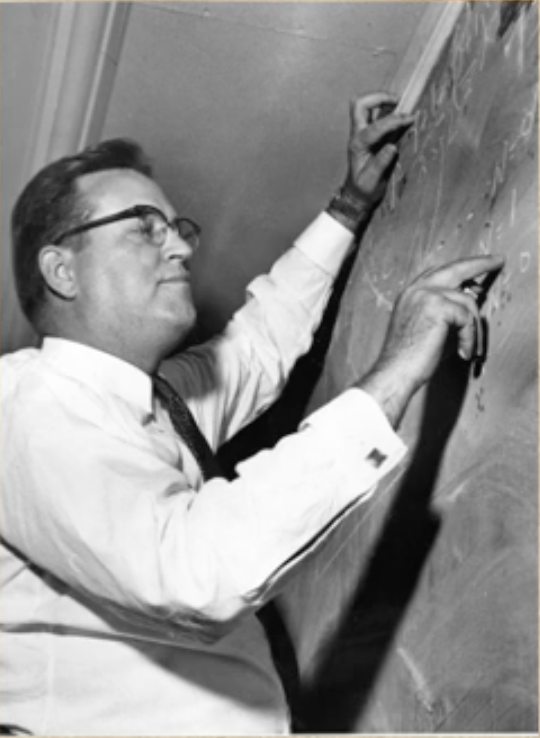Difference between revisions of "Melvin A. Cook"
| Line 1: | Line 1: | ||
| − | [[Image: | + | [[Image:Melvin_A_Cook.png|250px|thumb|left]] |
'''Melvin A. Cook''' was a chemist and renowned inventor and scientist known for his work in explosives, particularly the development of slurry explosives. | '''Melvin A. Cook''' was a chemist and renowned inventor and scientist known for his work in explosives, particularly the development of slurry explosives. | ||
Latest revision as of 23:14, 14 February 2024
Melvin A. Cook was a chemist and renowned inventor and scientist known for his work in explosives, particularly the development of slurry explosives.
Cook received a bachelor’s and master’s degree in chemistry from the University of Utah in 1934 and a PhD in physical chemistry from Yale University in 1937. He was a professor of metallurgy and mechanical engineering at the University of Utah. he also founded several commercial enterprises manufacturing industrial explosives. He was also the director of the Institute of Metals and Explosives Research and made important scientific contributions in the fields of flotation, adsorption of gases on solids, universal gravitation, and detonation-generated plasma.
His invention of slurry explosives, considered one of the world’s safest, most powerful and cost-effective commercial explosives, allowed the economical development of natural resources in mines throughout the world. At the centennial celebration of Alfred Nobel’s invention of dynamite, Cook was awarded the Nitro-Nobel Gold Medallion in 1968 (not the same as the Nobel Prize conferred by the Nobel Foundation). He held other distinctions, such as the E. V. Murphree Award of the American Chemical Society (1968) and the Chemical Pioneer Award of the American Institute of Chemists (1973).
One of his most important scientific contributions is the "Thermohydrodynamic Theory and Mechanism of Detonation,” which he developed in 1942 as a research chemist at the DuPont Company. Along with his theoretical and applied work at DuPont, he made a significant improvement in the shaped charge for the bazooka which enabled it to be a more effective anti-tank weapon during World War II. For this he received a special award from the U.S. Army in 1992.
Cook is the author of over 200 scientific articles and wrote six books, including classics in the field of explosives, "The Science of High Explosives", American Chemical Society Monograph No. 139, and The Science of Industrial Explosives. He patented over 100 inventions.
He was a consultant throughout the world and served as an expert witness in numerous cases involving accidental explosions, such as the Texas City disaster in 1947, where two shiploads of ammonium nitrate fertilizer blew up in the harbor, killing over 600 people. It is considered the worst industrial accident in United States history.
Cook was a member of The Church of Jesus Christ of Latter-day Saints. He was born on October 10, 1911, in Garden City, Utah, and died on October 12, 2000, in Salt Lake City, Utah.
